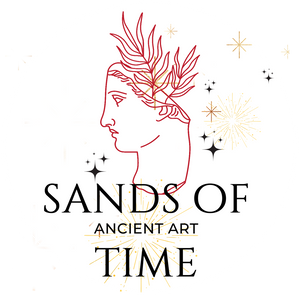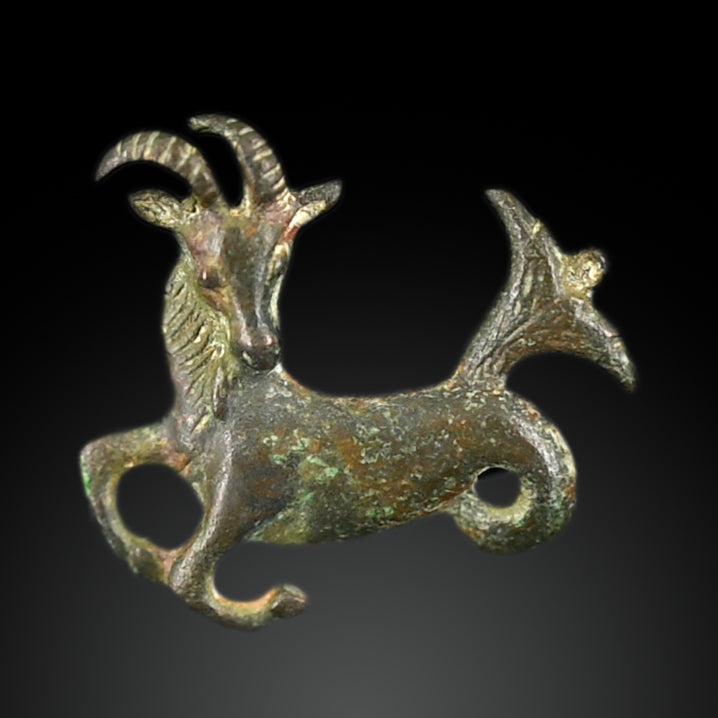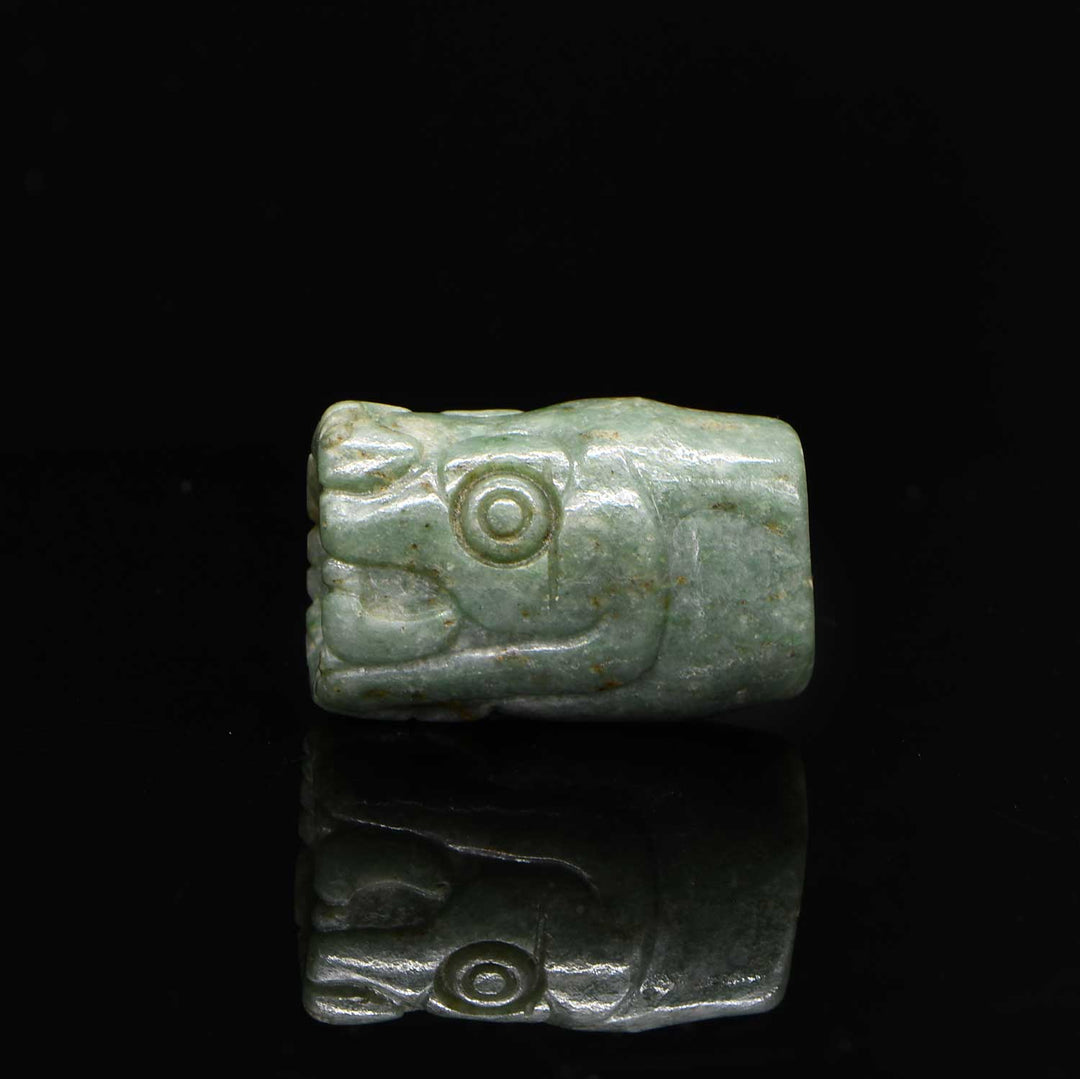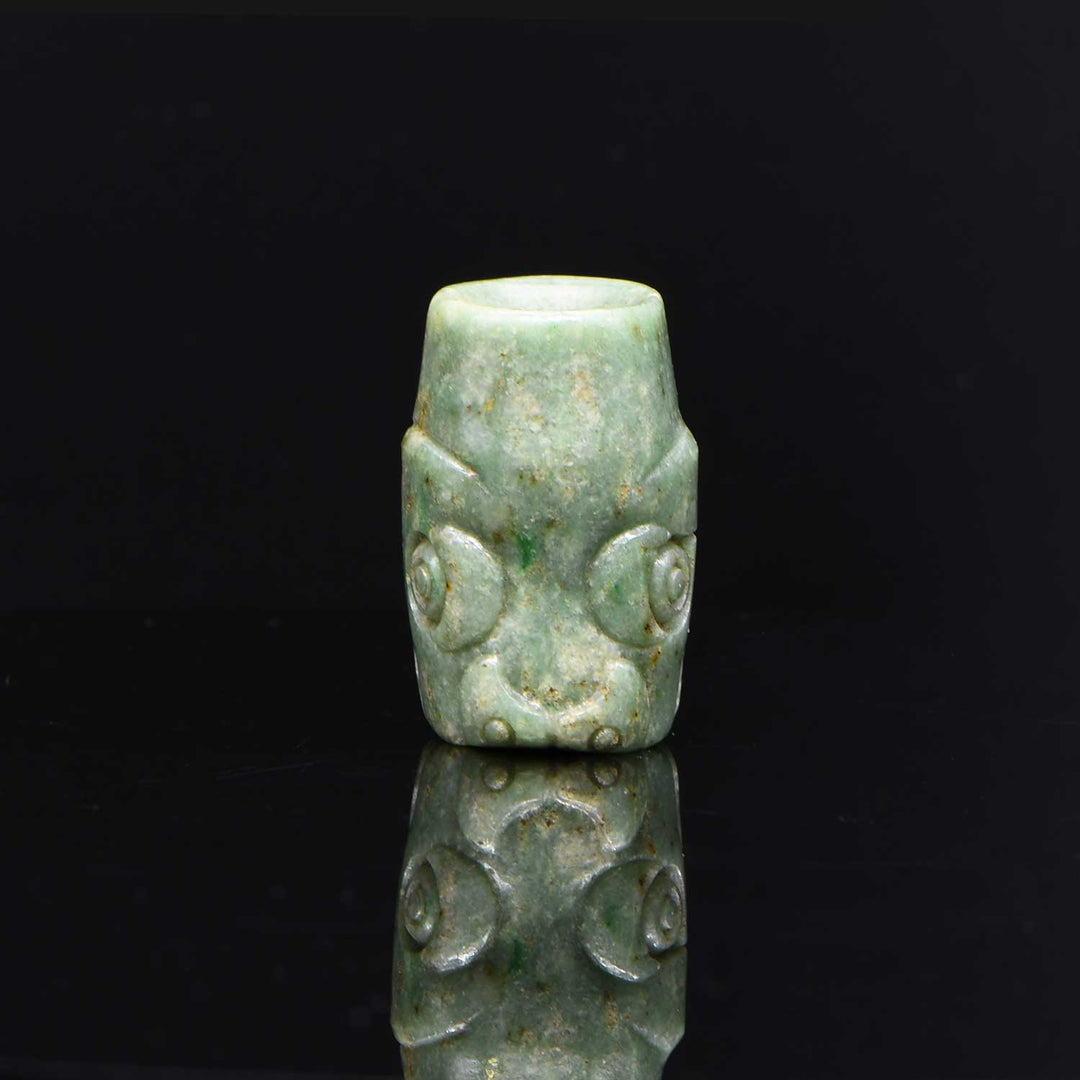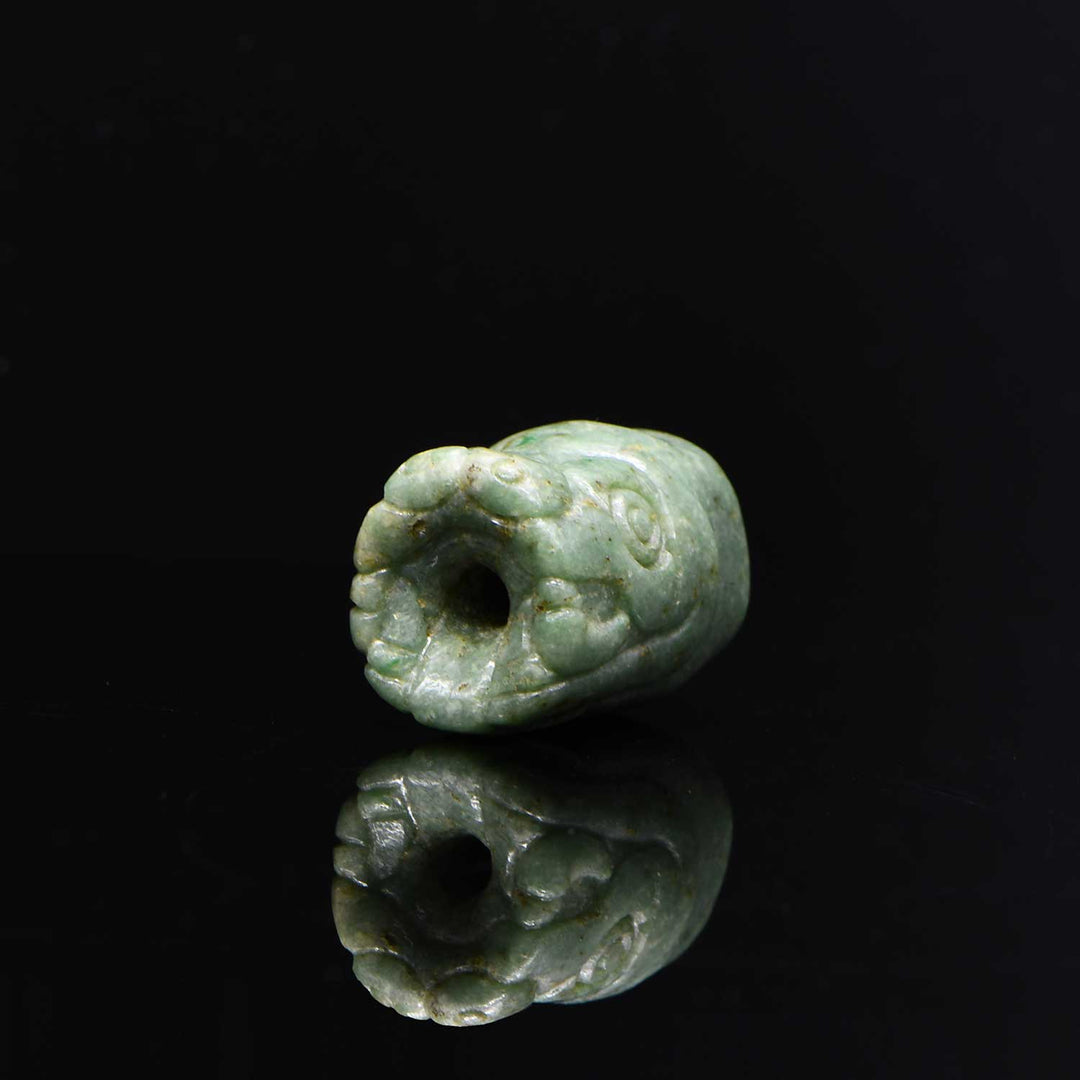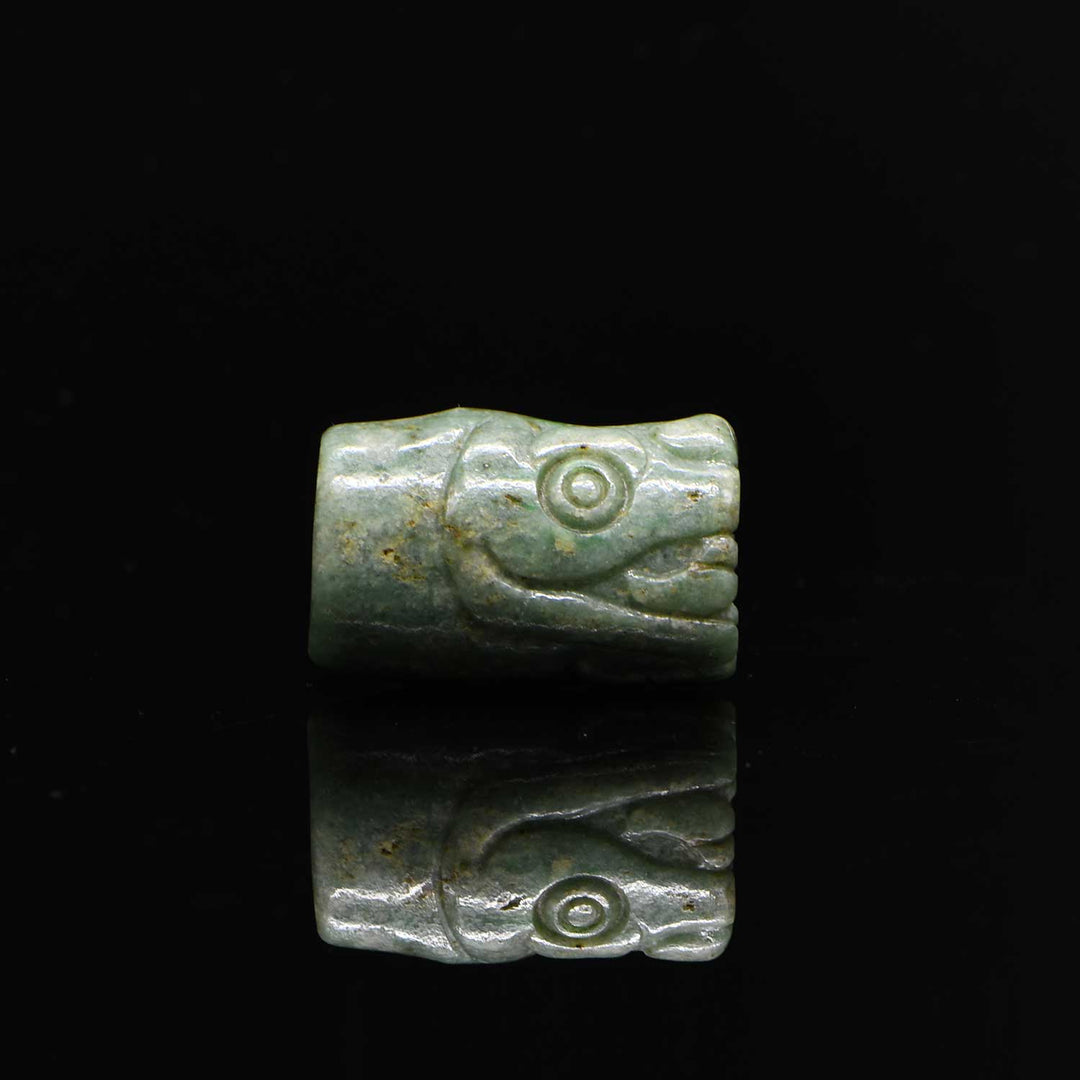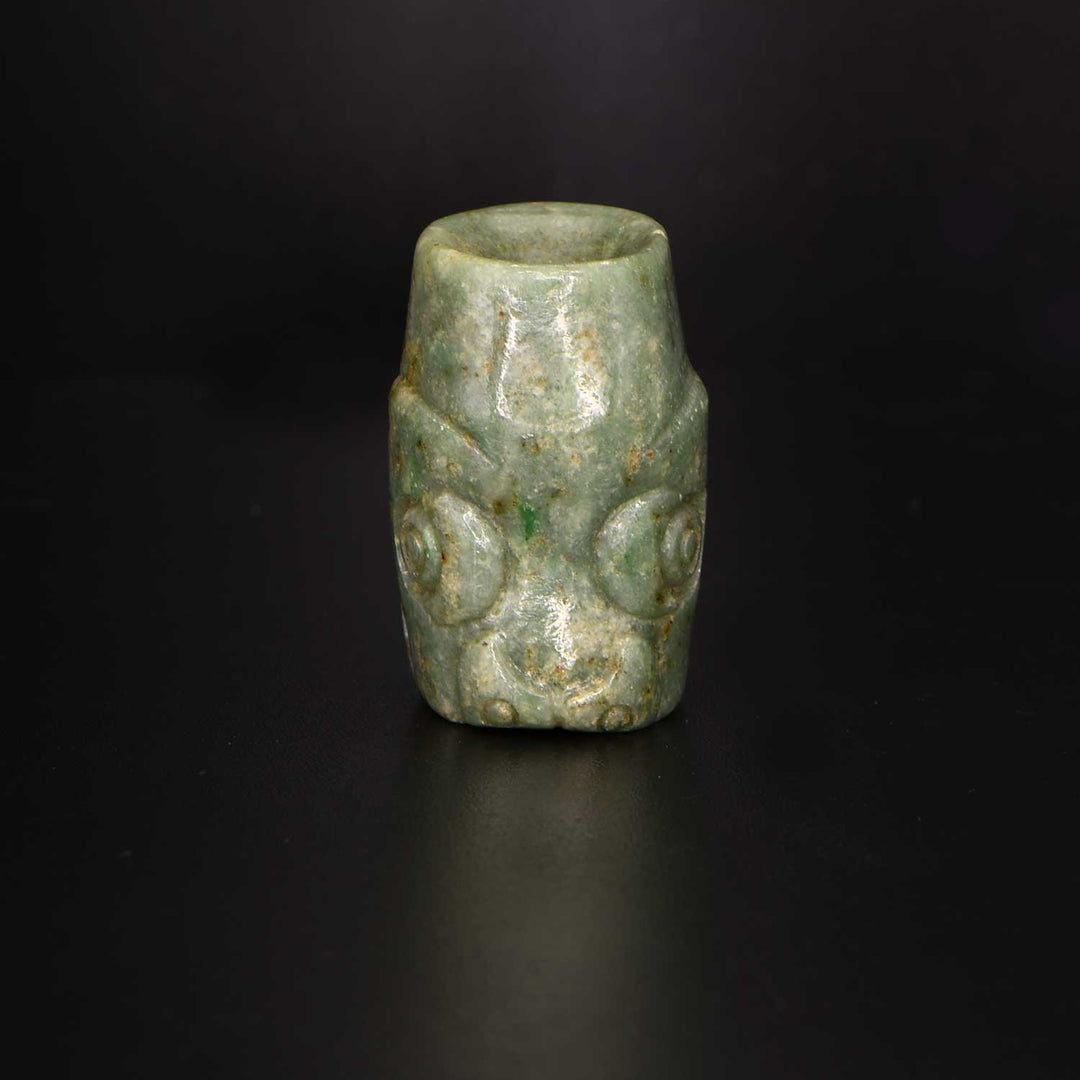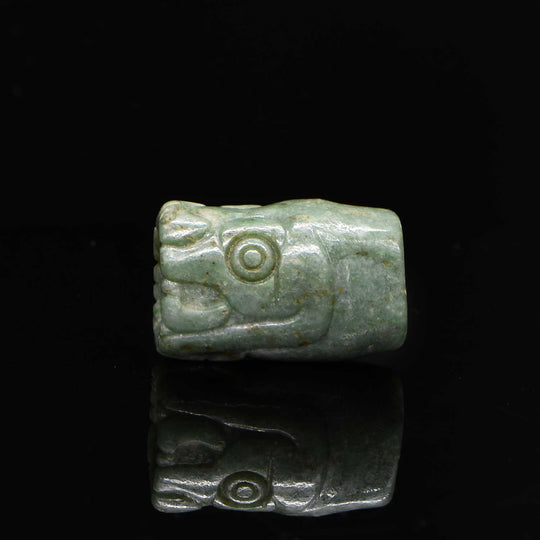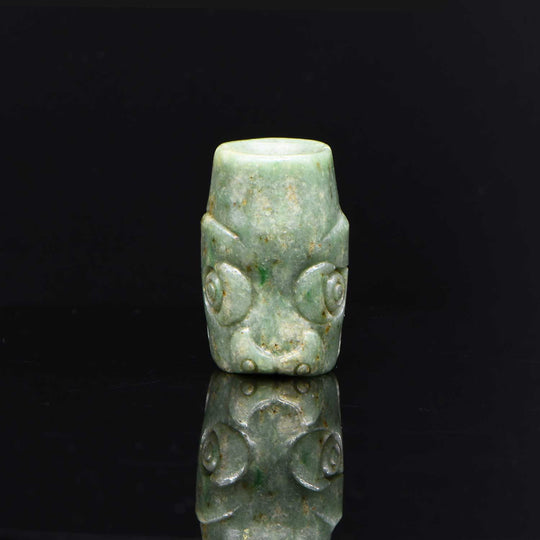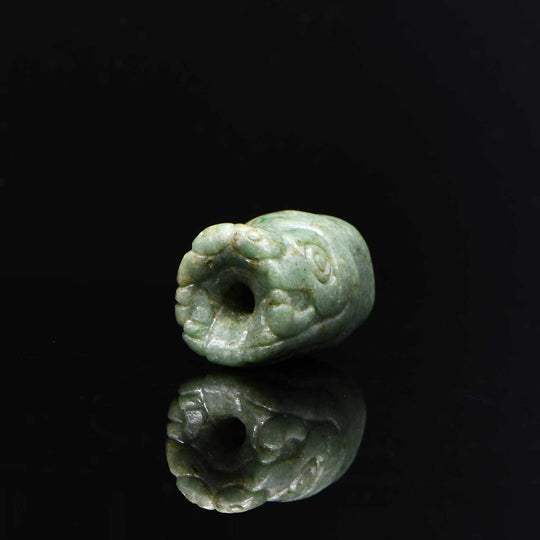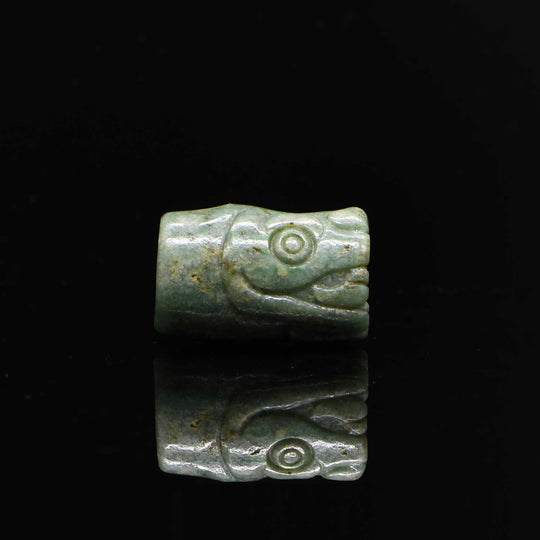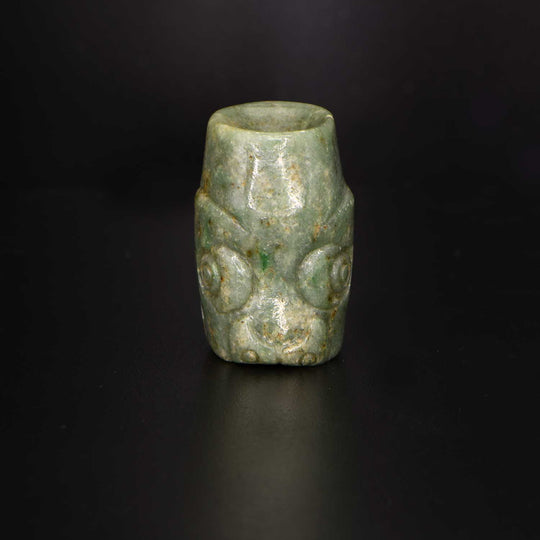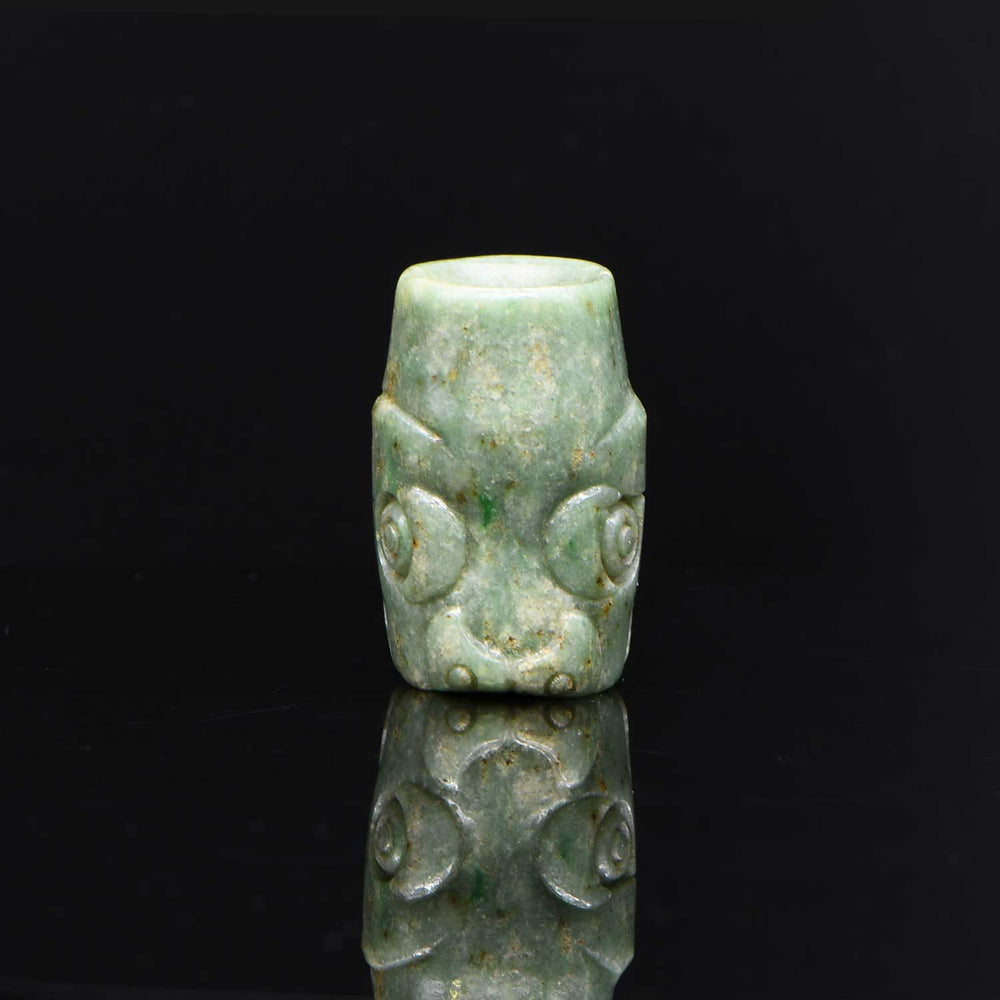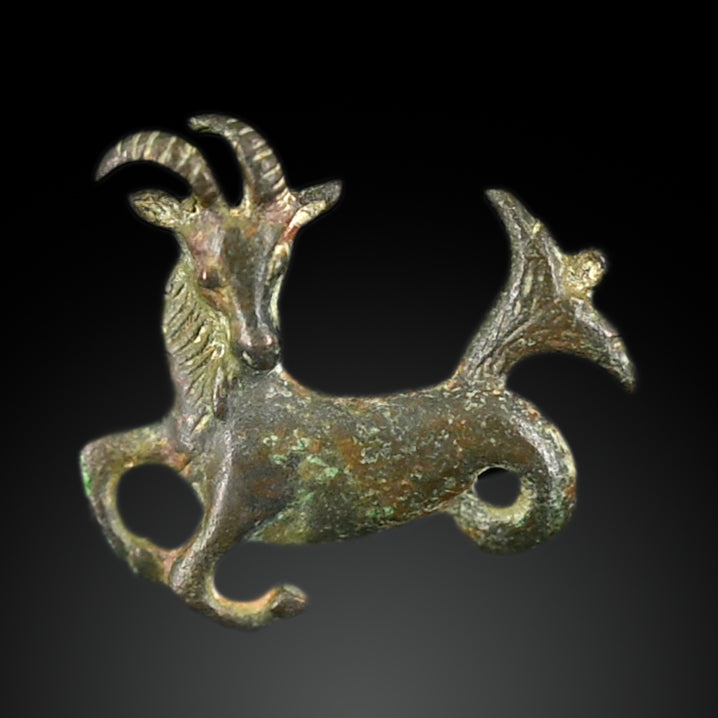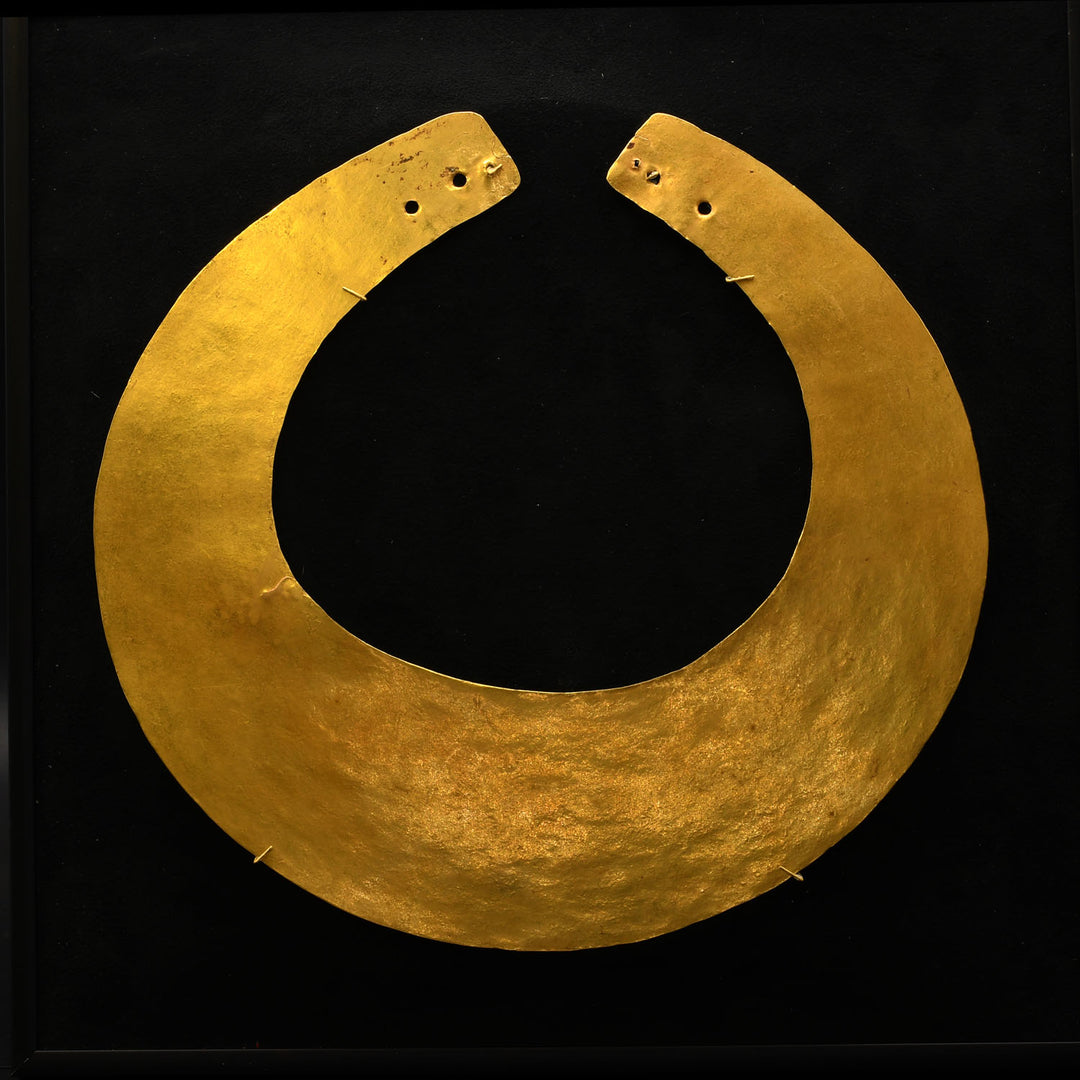A rare Mixtec Serpent Head Jade Bead, ca. 13th - 15th century CE
PJ2110
- This object qualifies for free and fast worldwide shipping.
Exquisitely carved from a single piece of jade into the cylindrical form of a serpent head, the long forked tongue, curved fangs, raised snout, hinged jaw, and wide staring eyes rendered in relief, all incised around the open "mouth" or suspension hole drilled through the length of the bead.
Similar effigy beads representing standing or squatting men were believed to have been worn or strung in the hair of mummy bundles as protective devices, and also may have doubled as important trade items (Stone-Miller 48).
Jade was one of the most highly prized materials throughout ancient Pre-Columbia. Jade beads first appeared in Olmec tombs around 1000 BCE in a distinctive blue-green tone. Apple-green jade began appearing in Mayan and Teotihuacan offerings in the first millennium CE, probably sourced from the Guatemalan highlands. Jade seemed to have diminished in the Post-Classic Period (ca. 900 - 1500 CE) and as a result, Mixtec and Aztec offerings were often of less brilliantly colored stone or were reworked from earlier Olmec and Mayan pieces (Dubin 246).
Ref: Dubin, Lois Sherr. The Worldwide History of Beads, London: Thames and Hudson (1987), pp. 246-50.
Stone-Miller, Rebecca, Seeing with New Eyes: Highlights of the Michael C. Carlos Museum Collection of Art of the Ancient Americas (2002), p. 48.
Dimensions: Length: 1 3/8 inches (3.5 cm), Width: 3/4 inch (1.9 cm)
Condition: Intact and in excellent condition overall.
Provenance: Private Florida collection. Previously in the collection of Keith Finello, who had one of the finest private collections of Pre Columbian jade in North America.
Sands of Time provides a lifetime, unconditional guarantee of authenticity and provenance. Every object you purchase from us is accompanied by a Certificate of Authenticity, stating culture, provenance, and age.
Furthermore, we conduct due diligence to ensure the item, to the best of our knowledge, has not been illegally obtained from an excavation, architectural monument, public institution, or private property. Wherever possible, reference is made to existing collections or publications.Wherever possible, reference is made to existing collections or publications.
We ship Tuesday to Friday with FedEx and usually same day if your order is received before 2pm. Within the continental USA, packing, shipping and insurance is free. Depending on size and destination, delivery times range from one to five business days.
If we are shipping this object to you overseas, there is no charge for packing, preparation of all customs paperwork, insurance and carrier fees in compliance with all USA and International customs requirements.
We send overseas shipments with FedEx International Priority which usually means two to three day delivery to Europe and the UK, customs willing but contact us if you have a shipping preference.
Please note: International customers are responsible for all duties and taxes.
